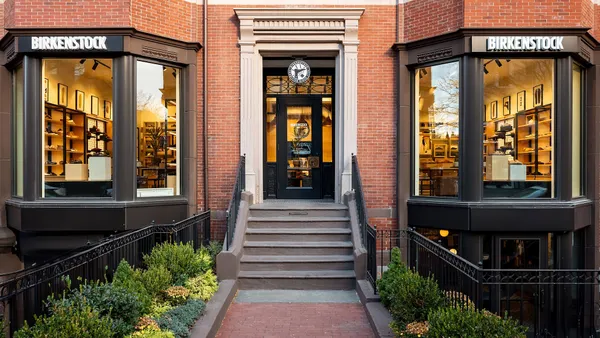Dive Brief:
- S&P Global Ratings lowered the corporate credit rating of At Home Group to B- from B citing weakening sales and cash flow, as well as elevated freight costs and falling consumer demand.
- The ratings firm issued a negative outlook for At Home, indicating the potential for another downgrade down the line.
- S&P analysts said in a press release they could lower At Home’s rating again if “anticipated cost improvements do not materialize, delaying the rebound in earnings and cash flow that we expect in fiscal 2024 and leading to a potentially unsustainable capital structure.”
Dive Insight:
When Hellman & Friedman acquired At Home last summer, Erik Ragatz, a partner with the private equity firm, said that the discount home goods retailer fit with the firm’s strategy of buying “highly differentiated businesses with substantial room for growth.”
It was part of a short-lived renaissance in leveraged buyouts in the retail space after years of bankruptcies left private equity jittery about buying up traditional store chains and loading them up with debt.
At Home was coming off a surge in sales during the early pandemic, with top-line sales spiking more than 27% in the 2020 fiscal year and comparable sales increasing 19.4%.
But the home goods boom didn’t last. It ended as consumers finished outfitting home offices and living spaces, pulled forward future purchases, ran out of stimulus payments and became bogged down with spiking food and gas prices.
Now At Home is a company with more debt from its acquisition and falling sales. As it burns through cash, it’s taking on even more debt and increasing its leverage levels, which S&P analysts noted in downgrading the company.
The analysts pointed out that At Home had negative cash flow of $160 million for the first half of the fiscal year and would likely keep burning through some cash through the end of the year.
To stay liquid, the company has more than doubled the availability under its asset-based lending facility, which S&P analysts think At Home will have to draw on as it deals with high freight costs — the bane of furniture retailers since 2021’s supply chain bottlenecks — and “pursues a high in-stock inventory strategy to increase consumer relevance.”
The analysts noted that At Home is working to mitigate those costs by contracting directly with carriers — in hopes of increasing capacity and winning better rates — and diversifying its supplier base geographically. Still, even with costs expected to fall, freight will likely eat into At Home’s bottom line, especially as consumer demand remains weak.
All that said, At Home’s value position provides it a buffer in the tough consumer climate. Its low-price offer “supports its competitive position, particularly during weaker economic periods, when consumers often look to trade-down their purchases,” S&P analysts said.














